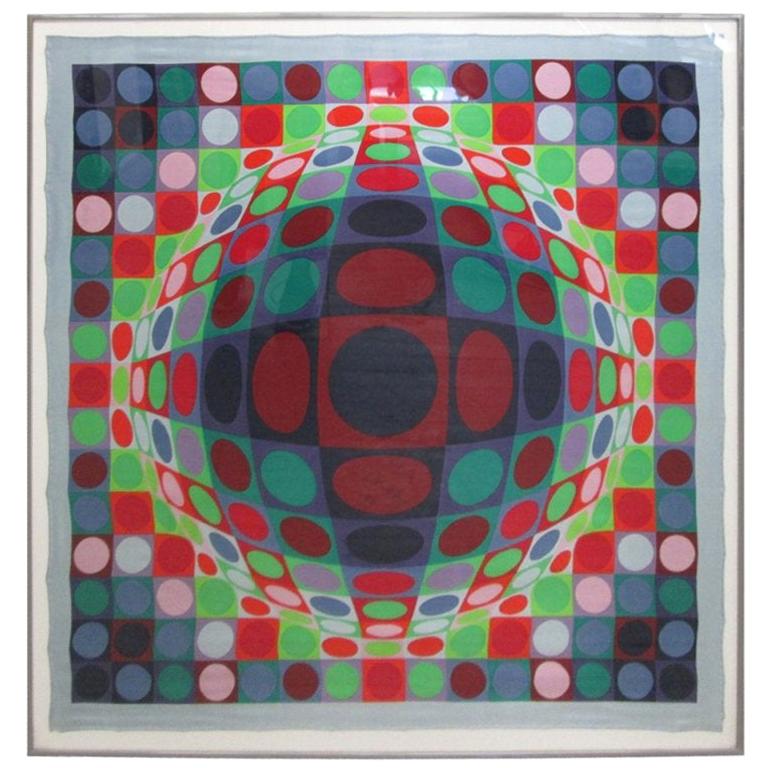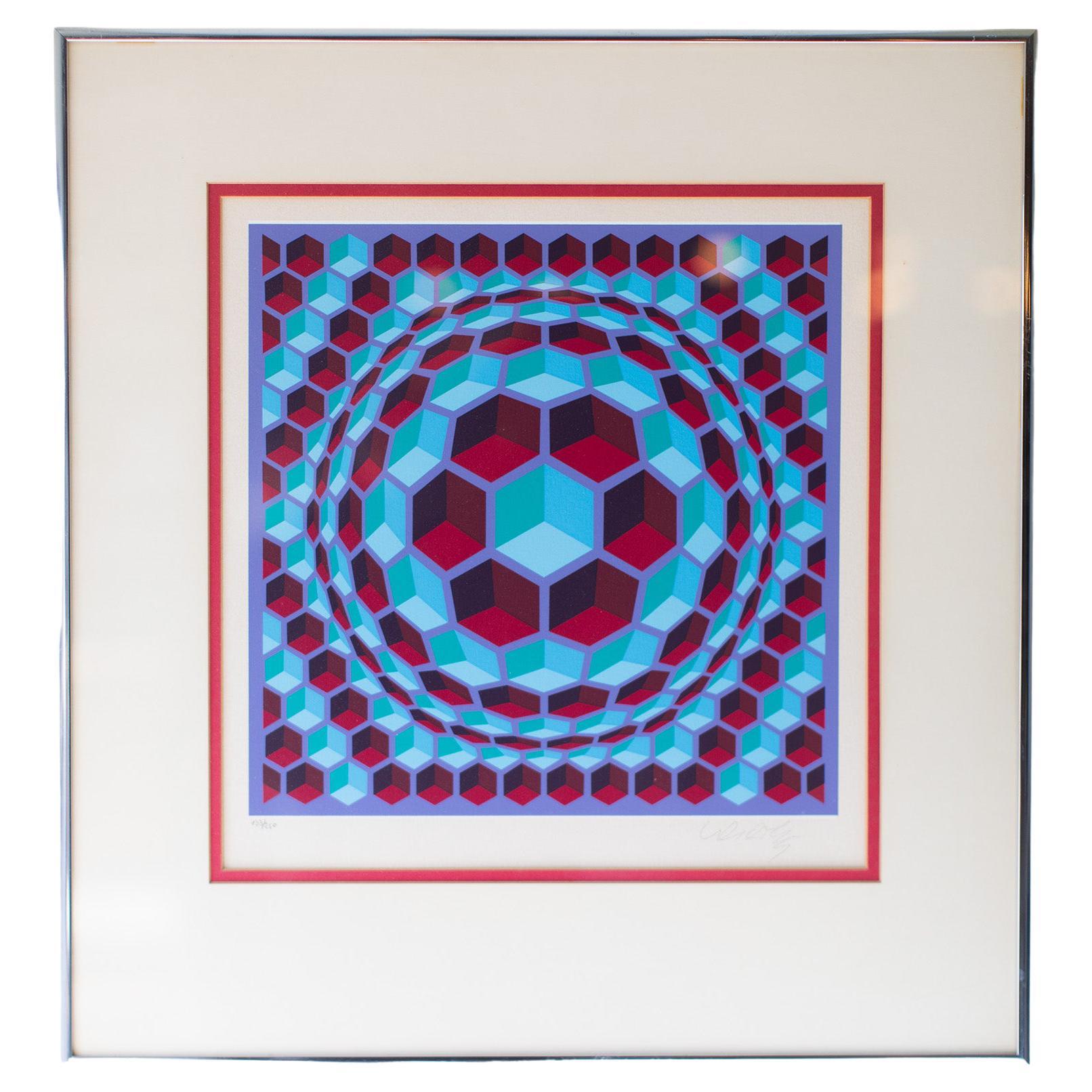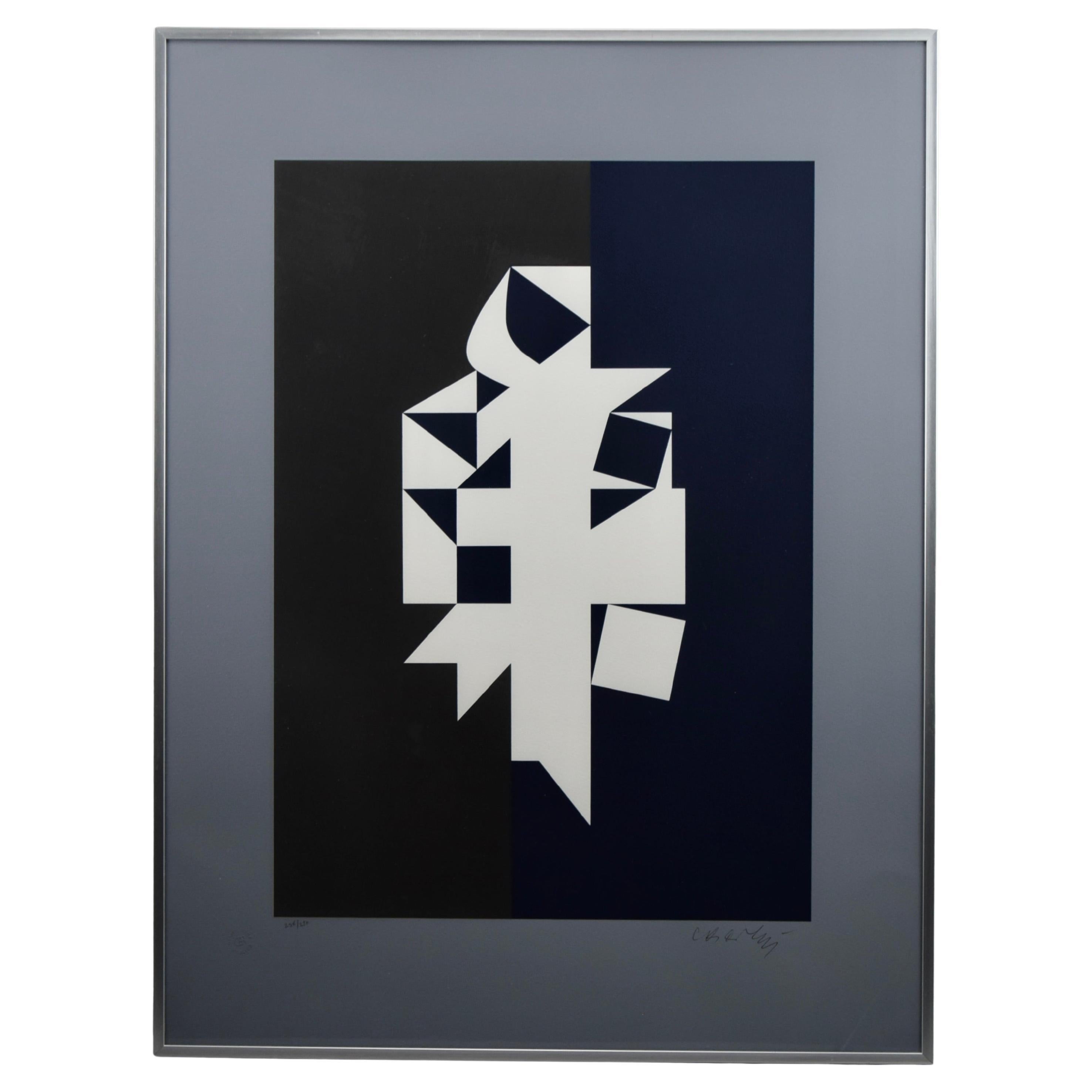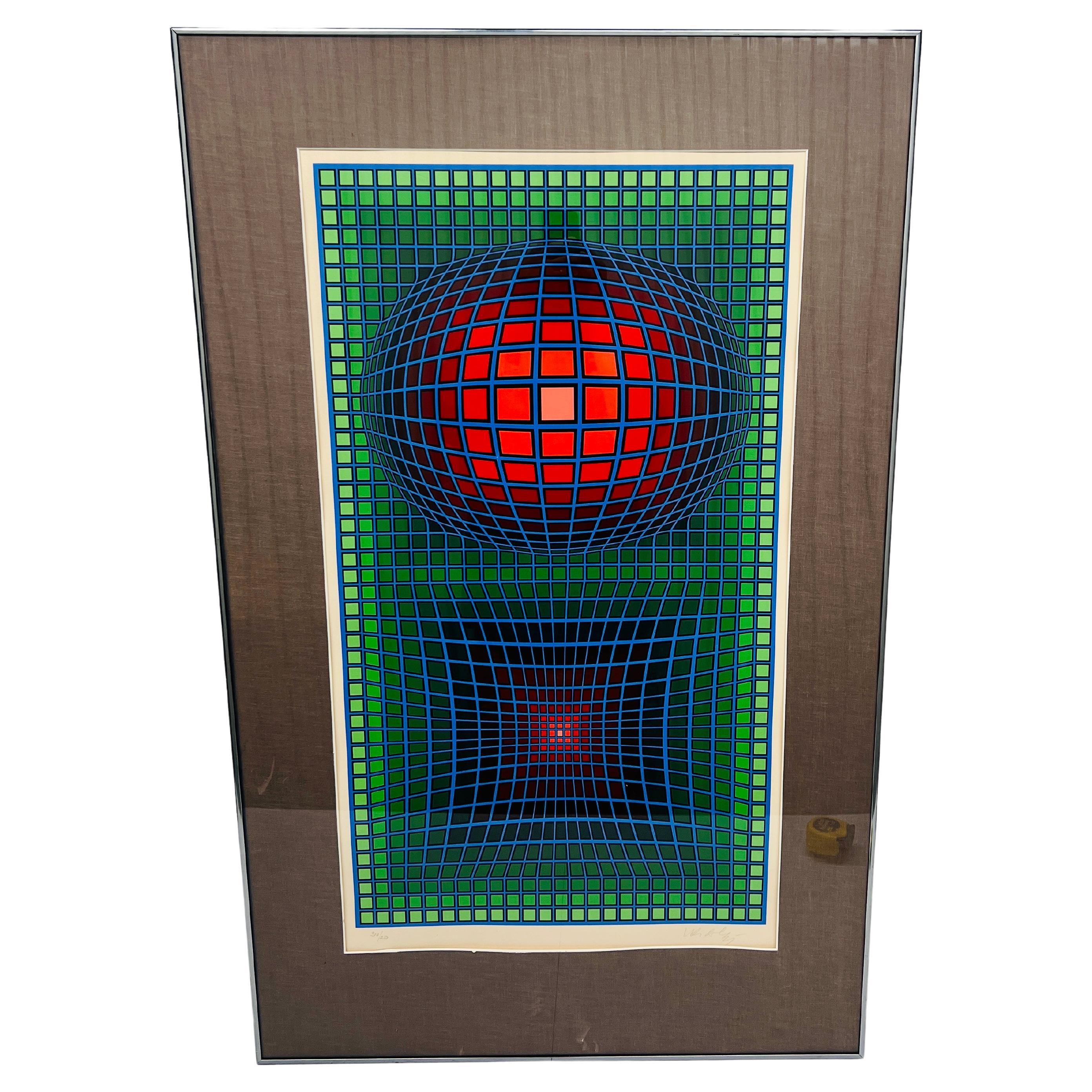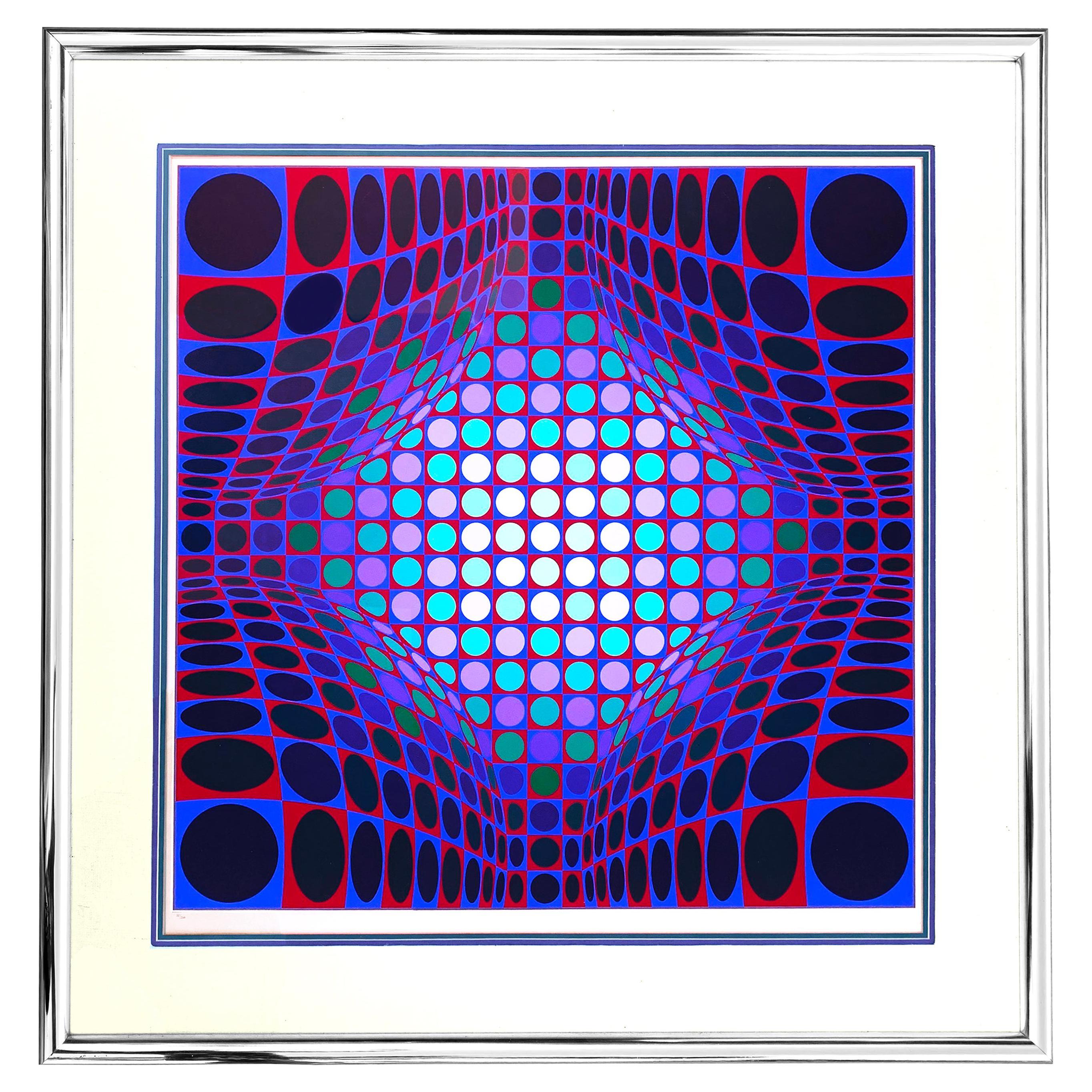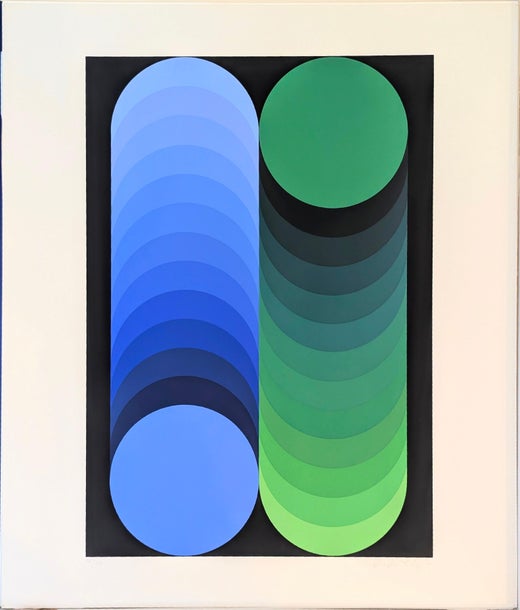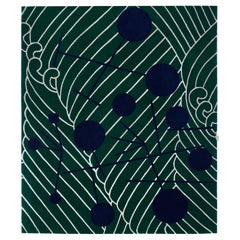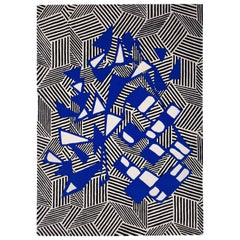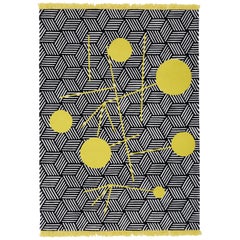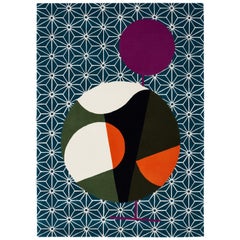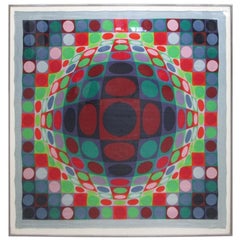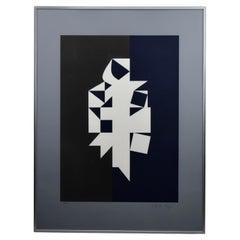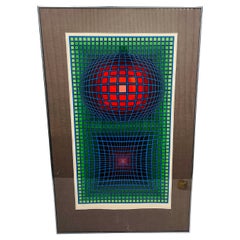Victor Vasarely, Hand Signed Original Tapestry
About the Item
- Creator:Victor Vasarely (Artist)
- Dimensions:Height: 47.25 in (120 cm)Width: 28.35 in (72 cm)Depth: 0.4 in (1 cm)
- Style:Modern (Of the Period)
- Materials and Techniques:
- Place of Origin:
- Period:1980-1989
- Date of Manufacture:circa 1983
- Condition:
- Seller Location:Geneve, CH
- Reference Number:1stDibs: LU1219233964492
Victor Vasarely
Widely considered the grandfather of Op art, the French-Hungarian painter Victor Vasarely (1906–97) created eye-popping geometric abstractions that play with the viewer’s perception of depth, perspective and motion. A classic example is the 1937 Zebra, which consists of undulating black and white stripes that suggest the form of the titular animal through optical trickery. The work is often credited as the earliest Op art painting.
Such illusions were more than pleasing tricks for Vasarely, who insisted that “pure form and pure color can signify the world.” He wanted to “democratize” art by producing works in large editions at reasonable prices that were understandable across national and cultural boundaries. In the 1960s, he developed an alphabet plastique, or fine art alphabet, consisting of elementary visual building blocks that could be used in endless combinations to create original compositions. By employing this universal visual vocabulary and stripping away topical references, he sought to create what he called a “Planetary Folklore.”
Embodying Vasarely’s singular belief that art should serve a social function, accessible to all, these innovations may perhaps be his greatest contribution to 20th-century art.
Find a collection of Victor Vasarely prints, paintings, sculptures and other art on 1stDibs.
Galerie Philia
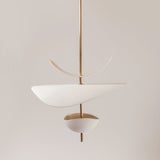
- ShippingRetrieving quote...Shipping from: Paris, France
- Return Policy
More From This Seller
View All2010s New Zealand Modern Western European Rugs
Wool
2010s New Zealand Modern Western European Rugs
Wool
2010s New Zealand Modern Western European Rugs
Wool
2010s New Zealand Modern Western European Rugs
Wool
2010s British Modern Western European Rugs
Wool
2010s New Zealand Modern Western European Rugs
Wool
You May Also Like
Vintage 1960s American Mid-Century Modern Contemporary Art
Silk
Vintage 1970s French Mid-Century Modern Contemporary Art
Paper
Vintage 1970s French Mid-Century Modern Prints
Paper
20th Century French Mid-Century Modern Contemporary Art
Paper
Vintage 1970s American Post-Modern Contemporary Art
Glass, Paper
Vintage 1970s Unknown Mid-Century Modern Prints
Paint, Paper
Read More
Get to Know the Artists Who Led the Op Art Movement
In the 1960s and '70s, the hypnotic creations of Op artists went mainstream and influenced the look of pop culture.
Galerie Philia Unveils Limited-Edition Designs at Giampiero Tagliaferri’s New L.A. Studio
For the exhibition “Materia Perpetua,” the gallery asked an international group of makers — including Tagliaferri — to explore the possibilities of a surprisingly versatile material: onyx.
